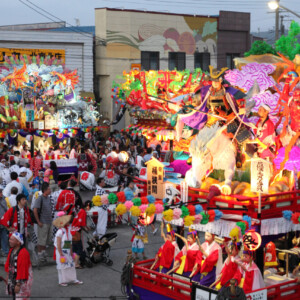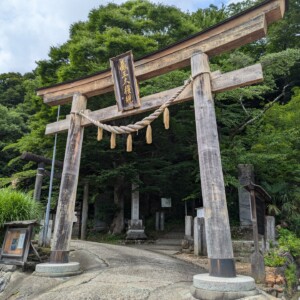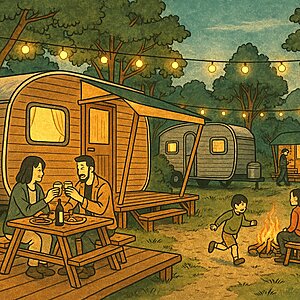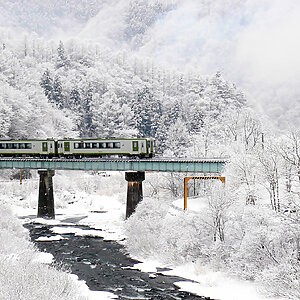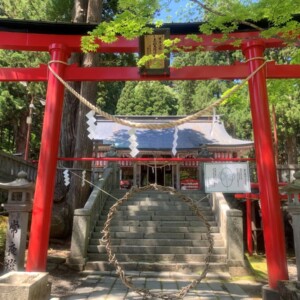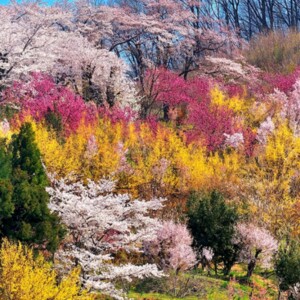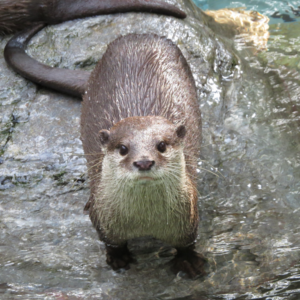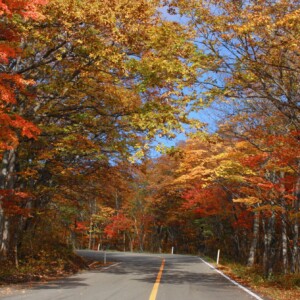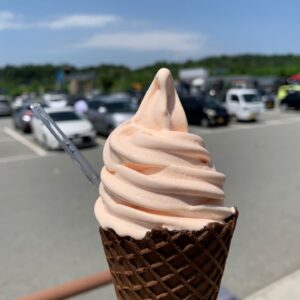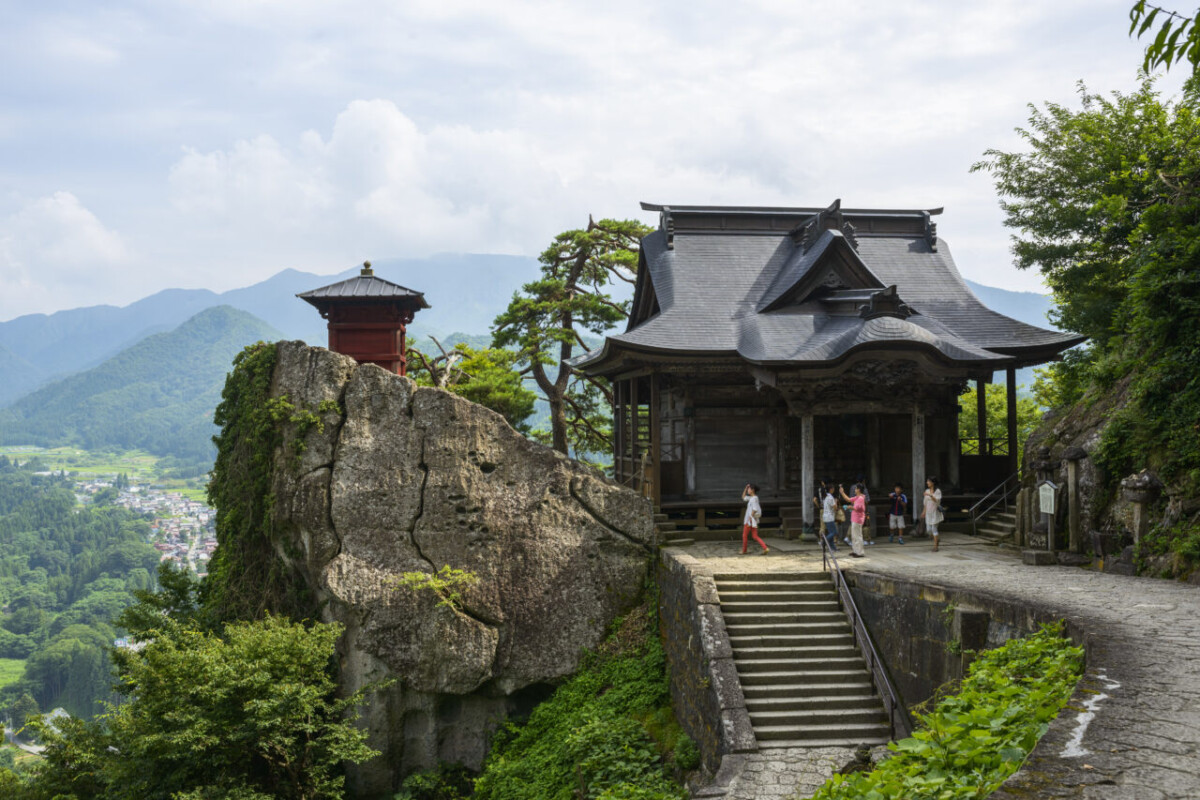
[Yamagata Prefecture] Why not enjoy watching the history of safflower culture from Yamaji Temple's "Tateishi-ji"?
table of contents
Did you know that the prefecture flowers of Yamagata Prefecture "safflowers" Yamagata Prefecture is the highest safflower production in Japan. Tracing history, we can see that even in the early Edo period, Yamagata Prefecture was the number one safflower producer in Japan.
Also, when it comes to scenic spots in Yamagata Prefecture, "Tateishiji Temple at Yamaji" is famous, and by enjoying the history of "Tateishiji Temple at Yamaji Temple" and "Safflower" together, we would like to introduce it to you.
The view from Yamadera Temple, which many people climb and is said to offer a spectacular view, is also impressive in another sense, so it's a good idea to learn about its history.
The place where Basho wrote ``Red Powder Flower with Eyebrows Covered''
Risshakuji, a mountain temple located in Yamagata City, Yamagata Prefecture, is a famous scenic spot in Yamagata. As it is called a mountain temple, the temple is built on a mountain wall, and Kaisan-do is built on a cliff-like location.
The haiku master Matsuo Basho is said to have composed a poem called ``Red Powder Flowers with Eyebrows Covered'' on his way to Risshakuji Temple.
On the way to Yamadera, there were many safflowers in full bloom, which looked like makeup tools for women's eyebrows, which is why a haiku was written that reminded us of women.
This mountain temple, Risshaku-ji, is also known as the temple of the sky, and you have to climb 1,015 stone steps to reach Okuno-in. It is also said that by climbing the long and difficult stone steps, people's earthly desires will disappear. It is.
This haiku by Basho Matsuo was composed during that difficult journey. After climbing the stone steps for an hour, you can see the spectacular view below, and I'm sure the beauty of the safflower made you forget your pain during the difficult times along the way.
It can be said that Matsuo Basho traveled to Yamadera in the early Edo period, when the distribution of safflower in Yamagata Prefecture was at its peak.
The beauty of safflower created by the fertile land and morning mist in the Mogami River basin
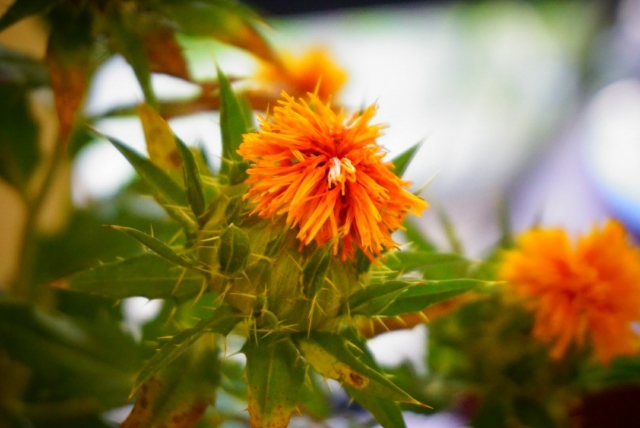
I'm sure the scenery of safflower throughout this area during the Edo period was spectacular.
Even now, Yamagata Prefecture has a valuable safflower industry that connects the Mogami River basin in Yamagata Prefecture. A distinctive feature of this area is that everything from safflower production to dyeing is carried out in various locations along the Mogami River.
Safflower cultivation takes advantage of the fertile soil of the Mogami River basin and the climate where morning fog tends to form. Perhaps Matsuo Basho also saw the morning mist and safflower together and saw the beauty of the red safflower in the white mist. And perhaps her beauty made her think of a woman.
During the Edo period, safflower was a proud product of Yamagata Prefecture and was said to be 100 times more valuable than rice and 10 times more expensive than gold. It is also said that they brought great wealth to the area.
While thinking about the history of flourishing with safflowers, it may be interesting to take a look at the view from Risshakuji Temple, a mountain temple overlooking the Mogami River basin.
Why not take a look at the beautiful safflower and the scenery of the mountain temple “Tateishokuji”?
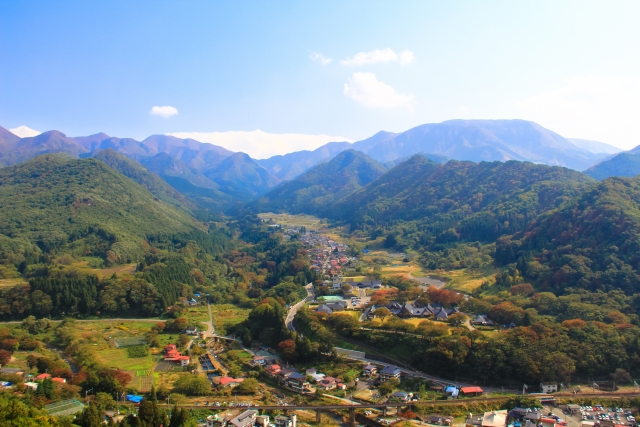
Safflowers bloom from July during the rainy season until around the end of the rainy season. When it first blooms, it is yellow, but it is fun to see the flower color change from yellow to red.
We also recommend visiting Risshaku-ji, a mountain temple in Yamagata Prefecture, on Mt. Hoju around July. It would be a good idea to see the same scenery as Matsuo Basho while walking up the difficult stone steps.
Mount Hoshu's Risshokuji Temple is a 30-minute drive from Yamagata Station or 20 minutes on the JR Senzan Line. It is conveniently located 15 minutes by car from Yamagata Kita IC and 30 minutes from Yamagata Airport. From there, you can climb the 1,015 stone steps to feel like you've traveled back in time to the Edo period.
In fact, Matsuo Basho wrote his famous haiku, ``The silence, the voice of the cicadas penetrating the rocks.'' Within the precincts, which are said to be approximately 330,000 tsubo, there are still over 30 temples and pagodas that are said to have been rebuilt during the Edo period, so why not take your time and take a look around?
Tateishi -ji Temple <INFORMATION>
- Name: Mt. Hoju Risshakuji Temple
- Address: 4456-1 Yamadera, Yamagata City, Yamagata Prefecture 999-3301
- Phone number: 023-695-2002
- Official URL: http://www.rissyakuji.jp/


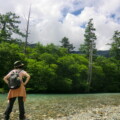
!["Mogami safflower" certified as a Japanese heritage and Japanese agricultural heritage [Yamagata Prefecture] Mogami safflower](https://jp.neft.asia/wp-content/uploads/2022/12/30121446_m-1-150x150.jpg)
![[Serialization: Following the narrow path in the back of the mountain ⑤] Struggling with the narrow path through the mountain pass and the difficult checkpoints, we headed to Dewa Province Oku no Hosomichi 5](https://jp.neft.asia/wp-content/uploads/2023/09/28a347e9b86312617fa5dcb3d266a91b-1-150x150.jpg)
![[Yamagata Prefecture] Walking through Tokamachi and Nanokamachi in Yamagata City, where the scent of the Edo period remains Yamagata city from Kasumi Castle Central Observation Room](https://jp.neft.asia/wp-content/uploads/2023/09/26303875_m-150x150.jpg)
![[Yamagata Prefecture] 4 famous spots for autumn leaves in Yamagata! Let's go out on this next holiday! e850b206d6122fb420fc7e594c7a290e_m](https://jp.neft.asia/wp-content/uploads/2017/11/e850b206d6122fb420fc7e594c7a290e_m-150x150.jpg)

![Tateishi-ji Temple, a corner of the four temple corridors, including Chuson-ji Temple, Mokoshi-ji Temple, and Zuigan-ji Temple [Yamagata Prefecture] Yamadera Risshakuji Temple](https://jp.neft.asia/wp-content/uploads/2016/09/26668581_m-150x150.jpg)
![Myoken Shrine, where the legend of the fierce battle between dogs and raccoons remains, remains of the "Legend of Benbekotaro" [Yamagata Prefecture] The Legend of Benbekotaro](https://jp.neft.asia/wp-content/uploads/2023/11/e423cc3b94bd877ba3631b415c289679-150x150.jpg)
![Yamagata City, the foot of the Zao mountain range, is a treasure trove of Senbero Bars! [Yamagata Prefecture] Yamagata Senbero](https://jp.neft.asia/wp-content/uploads/2023/11/8668825a56f14e3e756ea2f8b268571e-150x150.jpg)
